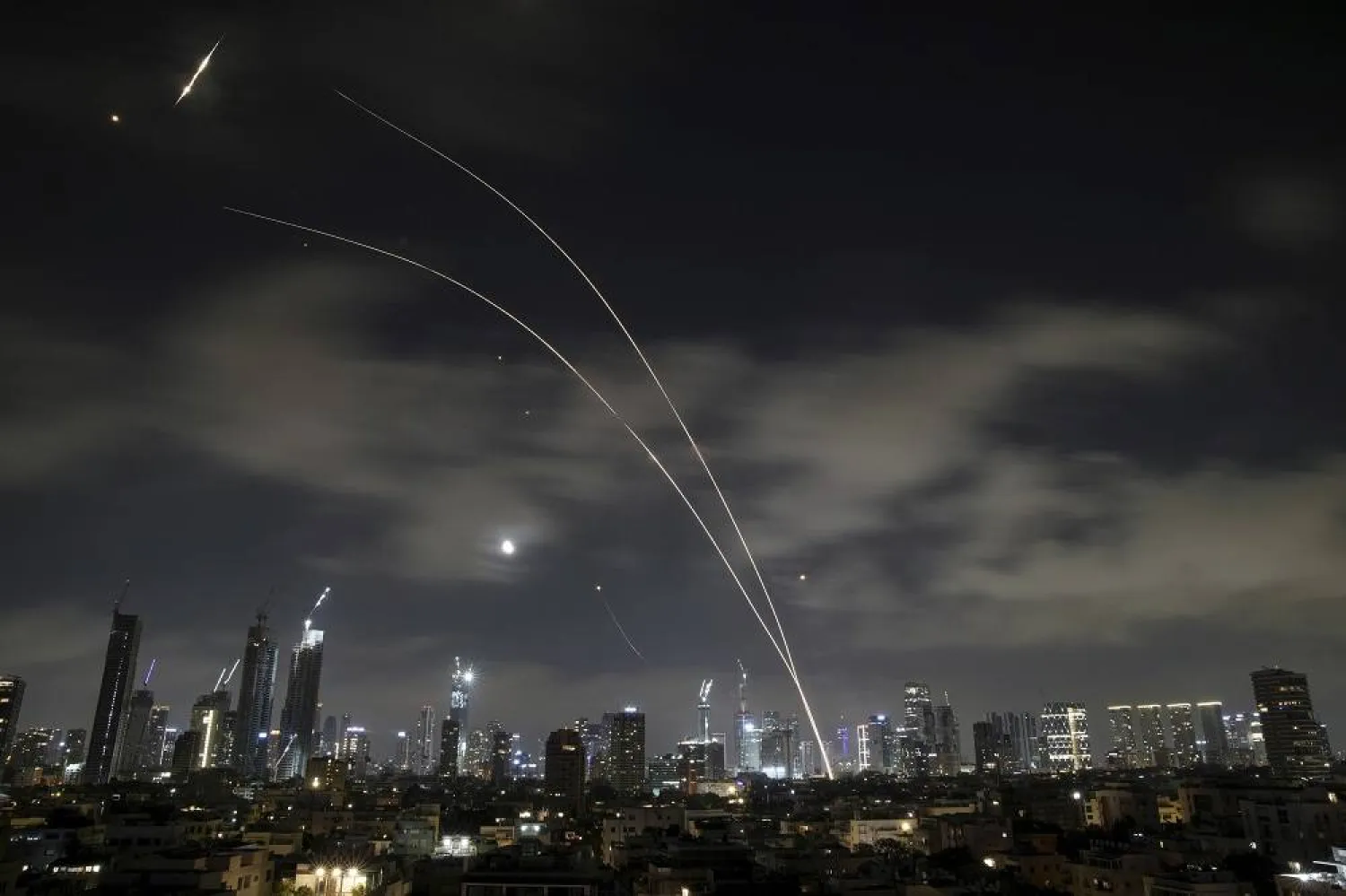Lebanese skies have turned into a daily theater of missiles streaking across between Iran and Israel, with the country’s geography making it a frontline in their aerial confrontation.
Missiles launched towards Israeli cities like Haifa and Tel Aviv must begin their descent trajectory over Lebanon, forcing Israeli air defense systems to intercept the threats near Lebanon’s southern and eastern borders.
Since Friday night, Lebanese people have witnessed a variety of projectiles, ranging from Iranian missiles and drones to Israeli air defense rockets, intersecting mid-air near Lebanon’s airspace.
Some fly in droves over Lebanese territory, others collide in the sky, while others veer off course, leaving fiery trails visible above the country.
Israeli interception launches come from multiple locations: the Mediterranean Sea to the west, the Golan Heights to the east, and central and northern Israel south of Lebanon.
Military and strategic affairs researcher Mustafa Asaad said Iranian forces have employed about 13 different types of missiles and projectiles in their attacks since last Friday.
In response, Israel is deploying five separate air defense systems operating at various altitudes.
Asaad explained that each missile type follows distinct flight paths and heights. Some travel at fixed altitudes, others maneuver to evade interception, and some even breach the atmosphere altogether.
This complex choreography aims to allow a few missiles, typically two or three, to bypass Israel’s air defenses and reach their targets.
Asaad added that Lebanese observers tend to see the missiles more clearly because they witness the final descent phase, when projectiles begin their downward trajectory toward targets.
While drones are rarely visible to the naked eye except when intercepted, Lebanese people in the south and to a lesser extent in Beirut, the Bekaa Valley, and Mount Lebanon frequently observe Iranian projectiles in flight.
Asaad explained this visibility occurs because these projectiles are often in their final stages, descending toward impact. “What we see are mostly medium-range missiles flying at altitudes low enough to be visible at night,” he said.
In contrast, missiles flying at higher altitudes become visible only during their final drop or when intercepted by Israeli air defenses, producing distinct explosions resembling stars or meteors. Missiles in these higher atmospheric layers are typically targeted by Israel’s missile defense systems.
In recent days, residents in southern Lebanon have witnessed several Iranian missiles descending in “convoy-like” formations toward Israel.
Some estimates suggest these projectiles’ warheads may split into two, four, or six parts when hit by Israeli interceptors, usually targeting the missile’s main body, creating the illusion of multiple missiles traveling together.
However, Asaad cast doubt on this theory, saying, “There is no evidence that Iran possesses such technology.”
He explained that the missiles observed in images are single-warhead ballistic missiles launched from a single platform, flying closely in a group along the same trajectory.
Asaad noted that Tehran’s missile arsenal does not yet match the sophistication of Russia’s recent systems, some of which were used in a major strike on Ukraine two weeks ago and featured advanced defenses like decoy flares designed to confuse air defenses.









